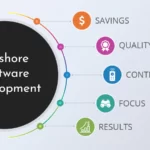
Mobile App Development, Software Development, Web Design, Web Development
Waterfall Project Management vs Agile: Which is Best for You?
Mrunal Pandit
Posted on February 20, 2023 - 0 Comments
The choice between Waterfall and Agile project management methodologies depends on various factors, including project type, team size, available resources, and project goals. Here’s an overview of each methodology:
Waterfall Project Management
The Waterfall methodology follows a linear approach to project management, where each phase must be completed before moving onto the next. The process typically consists of five stages: conception, initiation, planning, execution, and closure. Each stage has clearly defined tasks, deliverables, and deadlines, and the final product is delivered at the end of the project.
Waterfall is ideal for projects that have a clearly defined scope, a fixed budget, and a specific deadline. It is best suited for projects with well-understood requirements, such as building a bridge, manufacturing a product, or designing a building. Waterfall is often used in industries with strict regulations or compliance requirements, such as aerospace, construction, or government.
Waterfall project management has several pros and cons that should be considered when deciding which project management methodology to use. Here are some of the key advantages and disadvantages of the Waterfall approach:
Pros:
Clear and defined project requirements: The Waterfall approach emphasizes the importance of defining project requirements upfront, which can lead to a better understanding of the scope of work required and a more accurate budget and timeline.
Easy to plan and manage: The sequential and linear nature of Waterfall project management makes it easy to plan and manage projects. The well-defined phases, milestones, and deliverables make it easier to track progress, manage resources, and identify issues early on.
Well-suited for projects with fixed scope and budget: Waterfall methodology is ideal for projects with fixed scope, budget, and timeline, where changes are not anticipated or allowed. This makes it suitable for industries with strict regulatory requirements or complex infrastructure projects.
Efficient communication: Since the project is broken down into distinct phases, there are many opportunities for communication and collaboration between project stakeholders. This can help to ensure that everyone is on the same page and that the project is proceeding as planned.
Cons:
Lack of flexibility: The Waterfall approach is not very flexible, and changes to requirements or design are difficult to accommodate once the project is underway. This can result in costly delays, rework, and scope creep.
Limited feedback: Because each phase of the project is completed before moving on to the next, there is limited opportunity for stakeholders to provide feedback and make changes. This can result in a final product that does not meet the needs of the end-user.
High risk of project failure: The sequential nature of Waterfall methodology means that the project team may not discover issues until late in the project cycle. This can result in costly rework, missed deadlines, and ultimately, project failure.
Requires experienced project management: Waterfall methodology requires experienced project management, as the high level of planning and coordination can be challenging for novice project managers.
Agile Project Management
Agile is a flexible and iterative approach to project management that emphasizes collaboration, customer feedback, and adaptability. Agile is based on the Agile Manifesto, which values “individuals and interactions over processes and tools, working software over comprehensive documentation, customer collaboration over contract negotiation, and responding to change over following a plan.”
Agile is ideal for projects that require frequent changes, adaptability, and flexibility, such as software development, marketing campaigns, or product design. Agile is well-suited for cross-functional teams, where collaboration and communication are critical to project success.
When deciding which methodology to use, consider the type of project, the project team, available resources, and project goals. Waterfall may be best suited for projects with a fixed scope, budget, and deadline, while Agile may be better for projects that require frequent changes and collaboration. Ultimately, the best approach will depend on the unique needs and constraints of your project and organization.
Agile project management has several pros and cons that should be considered when deciding which project management methodology to use. Here are some of the key advantages and disadvantages of the Agile approach:
Pros:
Flexibility: Agile project management is highly flexible, which makes it well-suited for projects with changing or evolving requirements. Agile methodology allows for continuous improvement and enables the project team to adapt to changing circumstances.
Customer-focused: Agile methodology is focused on delivering value to the customer. This approach emphasizes collaboration and feedback, which ensures that the final product meets the needs of the end-user.
Continuous improvement: Agile methodology encourages continuous improvement, which means that the project team is constantly looking for ways to improve the final product. This approach can lead to a better final product that better meets the needs of the customer.
Increased collaboration: Agile methodology emphasizes collaboration and communication between team members. This can lead to a more cohesive and productive team, and a better final product.
Cons:
Lack of structure: Agile project management is less structured than Waterfall methodology, which can make it more difficult to plan and manage. The lack of structure can also make it more challenging to track progress and identify issues.
Time and resource-intensive: Agile project management requires a significant amount of time and resources, including a high level of collaboration and communication. This can make it difficult to implement for smaller projects or teams.
Potential for scope creep: The flexible nature of Agile methodology can lead to scope creep, as stakeholders may request changes that were not initially part of the project scope. This can result in a longer project timeline and increased costs.
Heavy reliance on customer feedback: Agile methodology relies heavily on customer feedback, which means that the project team must have a good understanding of the needs and expectations of the end-user. If the project team does not have a clear understanding of the customer’s needs, this can lead to delays and rework.
Summary
Waterfall project management can be an effective approach for projects with well-defined requirements, limited changes, and a fixed timeline and budget. However, it may not be the best approach for projects where flexibility, stakeholder feedback, or continuous improvement are important.
Agile project management can be an effective approach for projects that require flexibility, continuous improvement, and customer feedback. However, it may not be the best approach for projects with well-defined requirements, limited changes, or a fixed timeline and budget. Ultimately, the best approach will depend on the unique needs and constraints of the project and organization.


